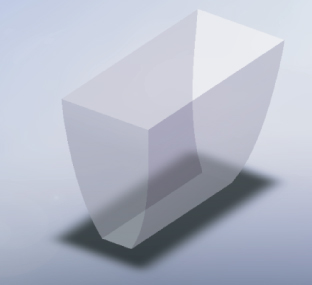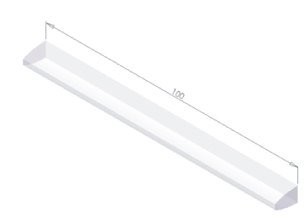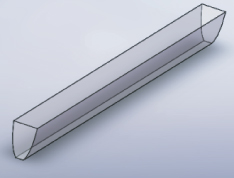Background
 The optical concentrators for solar energy generation are applied in both concentrating photovoltaic (CPV) and concentrating solar thermal (CST) technologies. The high-level concentrators move to track the sun across the sky in order to maximize the amount of sunlight that hits the solar cell. The low-level concentrators are stationary with a fixed direction as a conventional photovoltaic panel, but using prisms and magnifying lenses to maximize the solar collection. Since it adds cost and complexity to apply a tracker, the stationary solar concentrator is always attractive, especially when high concentration is not critical. The maximum concentration for the stationary solar concentrators has been actively explored.
The optical concentrators for solar energy generation are applied in both concentrating photovoltaic (CPV) and concentrating solar thermal (CST) technologies. The high-level concentrators move to track the sun across the sky in order to maximize the amount of sunlight that hits the solar cell. The low-level concentrators are stationary with a fixed direction as a conventional photovoltaic panel, but using prisms and magnifying lenses to maximize the solar collection. Since it adds cost and complexity to apply a tracker, the stationary solar concentrator is always attractive, especially when high concentration is not critical. The maximum concentration for the stationary solar concentrators has been actively explored.
The theoretical maximum concentration for the hollow concentrators (consisting of a medium with a refractive index of n=1) were found typically between 1 to 2 times, depending on the number of hours of sunlight collection. By filling the hollow concentrator with a dielectric medium (with a refractive index of n=1), the concentration limit can be increased. However, it remains a question how high the concentration can be for a practical dielectric design. In the real world application, there are practical constraints on possible optical designs, including, but not limited to, geometric shape, size and weight.
Description
 Researchers at the University of California, Merced gave the theoretical limits concentration allowed by non-imaging optics for the stationary solar concentrators. The new method is carried out in direction cosine space on a polar plane, which is different from previous analysis commonly performed in real space.
Researchers at the University of California, Merced gave the theoretical limits concentration allowed by non-imaging optics for the stationary solar concentrators. The new method is carried out in direction cosine space on a polar plane, which is different from previous analysis commonly performed in real space.
The inventors demonstrated the design principles for maximizing the concentration using several real, practical examples. These examples including a hollow CPC trough, a dielectric CPC trough, and a 3D dielectric stationary solar concentrator which is designed with practical considerations and concentrates sunlight four times, eight hours per day, all year.
Applications
 This method has application in photovoltaic and other solar energy collection and conversion systems.
This method has application in photovoltaic and other solar energy collection and conversion systems.
Advantages
The disclosed practical 4 times concentrator approaches the theoretical concentration limit for a stationary solar concentrator.
Inventors
Roland Winston
Weiya Zhang

